Oud Agarwood
Oud wood
Introduction to Oud Wood
Oud wood, also known as agarwood, is a rare and precious wood originating from the South East and India. It is made from the resin of the Aquilaria tree, a robust and resilient tree capable of withstanding harsh environments.
Oudh wood is formed when the Aquilaria tree is infected with fungus. When the tree is infected, the tree’s resin is released to protect it from the fungus. This resin then dries and becomes oudh wood.
Oudh wood is rare because it is only formed in specific regions around the world. The most renowned regions for oudh wood include:
- Vietnam: Indian oudh wood is considered the best in the world, with a warm, intense, and rich aroma.
- Indonesia: Indonesian oudh wood has a sweet, enchanting, and pleasant fragrance.
- Malaysia: Malaysian oudh wood has a fresh, gentle, and sophisticated aroma.
- India: Vietnamese oudh wood has a unique fragrance, blending woody and floral notes.
Oud wood possesses a distinctive and alluring fragrance:
Oudh wood has a warm, intense, and captivating fragrance, often described as the “scent of love.”
The fragrance of oudh wood results from the combination of various chemical compounds, including:
- Aldehydes: Creating a warm and intense aroma.
- Ketones: Contributing to a sweet and captivating fragrance.
- Esters: Providing a fresh and gentle aroma.
The scent of oudh wood stimulates the senses, creating a sense of relaxation, tranquility, and a love for life.
Check our Featured products!
Origin of Oud Wood
Oud wood is formed when the Aquilaria tree is infected with fungus. When the tree is infected, the tree’s resin is released to protect it from the fungus. This resin then dries and becomes oudh wood.
The Aquilaria tree is a large hardwood tree, reaching heights of up to 30 meters. These trees are commonly found in humid tropical forests in Asia, including the Middle East, Southeast Asia, and Vietnam.
There are around 20 different species of Aquilaria trees, but only a few can produce oud wood. Aquilaria species capable of producing oudh wood typically have a long lifespan, exceeding 50 years.
The formation process of oudh wood is complex and time-consuming. It can take anywhere from 10 to 50 years or even longer for oudh wood to be formed.
The quality of oud wood depends on various factors, including the tree’s age, tree species, climate conditions, and production methods. Oudh wood from older Aquilaria trees, cultivated in regions with favorable climates, and produced using traditional methods, often commands the highest value.
Additional specialized knowledge:
There are two main types of fungi that can contribute to the formation of oud wood:
- Aspergillus niger:
- This is the most common fungus that can lead to the formation of oudh wood.
- It often infects Aquilaria trees when they are injured or weakened.
- Aspergillus niger can produce chemical compounds that protect the tree from fungus, including phenolic compounds with antioxidant and antibacterial properties, as well as terpenes with antifungal effects. These chemical compounds contribute to the distinctive aroma of oudh wood.
- Fusarium solani:
- This is a less common but often associated with higher-quality oudh wood.
- It tends to infect Aquilaria trees that are already infected with other types of fungi.
- Fusarium solani can produce chemical compounds that protect the tree, including aldehydes with antioxidant and antibacterial properties, as well as ketones with antifungal effects. These chemical compounds also contribute to the unique fragrance of oud wood.
Both types of fungi, Aspergillus niger and Fusarium solani, can contribute to the formation of oudh wood. However, Fusarium solani often produces higher-quality and more valuable oudh wood.
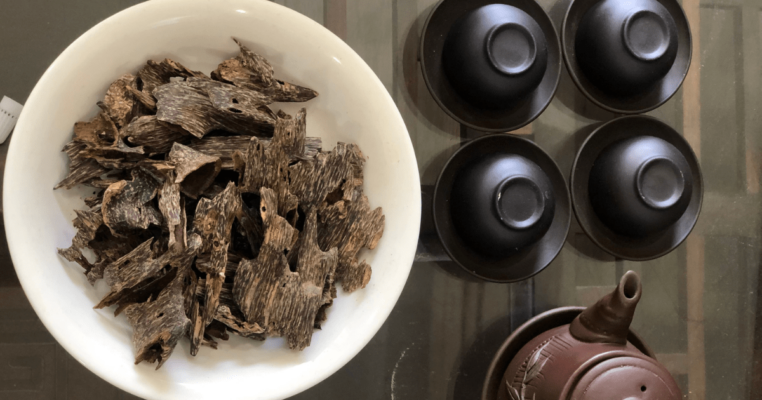
Factors Influencing Oud Wood Quality
In addition to the age of the tree, tree species, climate conditions, and production methods, the quality of oud wood depends on several other factors, including:
- Location of the Tree:Oudh wood is formed in locations with high humidity, stable temperatures, and ample sunlight, usually resulting in better quality. These climate conditions favor the growth of Aspergillus niger and Fusarium solani, the two main fungi responsible for oudh wood formation.
- Aroma of Oud Wood:Oudh wood has a warm, intense, and captivating aroma. The fragrance of oudh wood depends on various factors, including tree species, climate conditions, and production methods. Oudh wood with a complex and sophisticated fragrance often holds higher value.
The aroma of oud wood is created by various chemical compounds, including:
- Phenolic Compounds: Providing antioxidant and antibacterial properties.
- Terpenes: Offering antifungal effects.
- Aldehydes: Contributing to antioxidant and antibacterial properties.
- Ketones: Providing antifungal effects.
These chemical compounds are produced by Aspergillus niger and Fusarium solani during the infection process of the Aquilaria tree. The combination of these chemical compounds gives rise to the distinctive fragrance of oudh wood.
Other Factors Affecting Oud Wood Quality
In addition to the factors mentioned above, the quality of oudh wood can be influenced by several other factors, including:
- Health Condition of the Tree:A healthy Aquilaria tree is more likely to produce higher-quality oud wood.
- Processing Techniques:Proper processing of oudh wood contributes to better quality.
Conclusion:
The quality of oud wood depends on various factors. These factors can be categorized into two main groups, including internal factors within the tree and external factors outside the tree.
Internal factors within the tree include the age of the tree, tree species, and the health condition of the tree. External factors outside the tree include the location of the tree, climate conditions, and production methods.
High-quality oudh wood typically exhibits a complex and sophisticated fragrance.
Value of Oud Wood
Oud wood is a rare and highly valuable type of wood. Its value is influenced by various factors, including the age of the tree, tree species, climate conditions, production methods, and the fragrance of the oudh wood.
- Age of the Tree: Oud wood is formed during the Aquilaria tree’s fungal infection process, taking from 10 to 50 years or even longer. Oudh wood from older Aquilaria trees, with accumulated chemical compounds responsible for the fragrance, often holds higher value.
- Tree Species: Different species of Aquilaria trees can produce oudh wood with varying qualities and values. Oudh wood from species with longevity, cultivated in regions with suitable climates and soil conditions, tends to have higher value.
- Climate Conditions: Oudh wood formed in areas with high humidity, stable temperatures, and abundant sunlight is generally of higher quality. These climate conditions favor the growth of Aspergillus niger and Fusarium solani, the main fungi contributing to oud wood formation.
- Production Methods: Oudh wood produced using traditional methods often has a higher value compared to wood produced using modern methods. Traditional production methods involve manual processes, requiring more time and effort, resulting in higher-quality oudh wood.
- Fragrance of Oud Wood: Oudh wood has a warm, intense, and captivating fragrance. The complex and sophisticated fragrance of oudh wood, created by various chemical compounds such as phenolic compounds, terpenes, aldehydes, and ketones, contributes to its higher value.
Check our bestsellers!
Illustrative Examples:
Oud wood from Vietnam is considered the best in the world. It has a long lifespan, is cultivated in favorable climate conditions, and produced using traditional methods. Vietnamese oudh wood exhibits a warm, intense, and rich fragrance.
Indonesian oudh wood has a sweet, enchanting, and pleasant fragrance. It is grown in humid regions and produced using traditional methods.
Indian oud wood has a unique fragrance, blending woody and floral notes. It is cultivated in tropical and humid climates, and produced using traditional methods.
High-value oud wood is characterized by its unique fragrance, longevity, and traditional production methods, making it highly sought after in various countries.
Characteristics of Oud Wood
Oud wood is a rare and highly valuable type of wood with several distinctive characteristics, including:
- Color: Oudh wood is black or dark brown. The color of oudh wood depends on various factors, including tree species, climate conditions, and production methods.
- Weight: Oudh wood is heavier than other types of wood due to its high content of aromatic oils.
- Wood Grain: Oudh wood has beautiful and unique wood grain patterns, often in black, dark brown, or yellow.
- Fragrance: Oudh wood has a characteristic, warm, intense, and captivating fragrance. The fragrance is created by various chemical compounds, including phenolic compounds, terpenes, aldehydes, and ketones.
- Long-Lasting Scent: Oud wood has the ability to retain its fragrance for a long time. The scent can last for hours or even days.
- Antibacterial and Antioxidant Properties: Oudh wood possesses antibacterial and antioxidant properties. The chemical compounds in oudh wood act to kill bacteria, protect the wood from damage, and prevent oxidation.
In addition to the mentioned characteristics, oud wood also has various other effects, including:
- Relaxation and Stress Reduction: The fragrance of oudh wood has a relaxing and stress-reducing effect. Oudh wood is often used in massage therapies and aroma treatments.
- Mood Enhancement: The fragrance of oud wood enhances mood, making people feel happier and more content.
- Health Benefits: Oudh wood contains chemical compounds that contribute to health improvement, including antioxidants, antibacterial agents, and anti-inflammatory properties.
Oudh wood is not only visually appealing but also offers various health and psychological benefits, making it a rare and valuable wood.
Uses of Oud Wood
Oud wood is utilized in various fields, including:
- Perfume: Oudh wood is a crucial component in perfumes, providing a warm, intense, and captivating fragrance. It has been used in perfumes for thousands of years, especially in premium fragrances.
- Medicine: Oud wood is known for its stress-relieving and mood-enhancing properties. Compounds in oudh wood contribute to relaxation and are often used in massage therapies and aroma treatments.
- Furniture: Oudh wood is used in crafting high-end furniture, adding a touch of luxury and sophistication to living spaces. Furniture items such as chairs, cabinets, and beds made from oud wood showcase its unique beauty.
- Jewelry: Oudh wood is employed in creating high-end jewelry, bringing a sense of luxury and elegance to those who wear it. Items like bracelets, rings, and necklaces made from oudh wood are prized for their beauty.
Additionally, oud wood finds applications in other areas, including:
- Decoration: Oudh wood is used for interior decorations, such as wall paneling, flooring, and ceiling elements, enhancing the aesthetic appeal of living spaces.
- Incense: Oud wood is burned as incense, creating a subtle and calming aroma that adds a serene ambiance.
- Religious Ceremonies: Oudh wood is employed in religious rituals, contributing to a sense of tranquility and sacredness.
Oudh wood, with its rarity and high value, not only possesses unique beauty but also offers various benefits for both physical and mental well-being. As a result, it is utilized in diverse fields, contributing to the beauty and value of life.
Types of Oud Wood
Oudh wood is classified based on various criteria, including its origin, production methods, and quality.
Classification by Origin:
Oud wood is categorized based on the origin, depending on the Aquilaria species that produce it. There are approximately 20 different Aquilaria species, but only a few can produce oudh wood. The species capable of producing oudh wood often have a longer lifespan, typically 50 years or more.
The quality and value of oud wood from different Aquilaria species can vary. Oudh wood from species with a longer lifespan, cultivated in regions with suitable climate and soil conditions, tends to have higher value.
Classification by Production Method:
Oud wood is classified based on the production method, considering how it is harvested and processed. There are two main production methods:
- Traditional Method: This method involves inducing fungal infection in Aquilaria trees. The process can take 10 to 50 years or even longer. Oud wood produced using traditional methods is often of higher quality.
- Modern Method: This method utilizes chemical processes to create oudh wood. It allows for faster and easier production, but the quality may not match that of oudh wood produced through traditional methods.
Classification by Quality:
Oud wood is classified by quality based on several factors, including the tree’s lifespan, species, climate conditions, production method, and the fragrance of the oudh wood. Oudh wood from Aquilaria trees with a longer lifespan, cultivated in regions with favorable climates, produced using traditional methods, and featuring a complex and refined fragrance, often holds the highest value.
Conclusion:
Oud wood, a rare and valuable type of wood, possesses various notable characteristics, including color, weight, grain pattern, fragrance, longevity of scent, antibacterial, and antioxidative properties. It is classified based on different criteria, such as origin, production methods, and quality.
See more of our oud wood videos here:
Harvesting and Processing Oud wood
Harvesting Process:
Oud Wood Harvesting:
- Tree Source: Oud Wood comes from the Aquilaria tree, mainly found in tropical, humid regions like Southeast Asia, India, and China.
- Optimal Age: Trees are typically harvested between 20 and 100 years old, when they’ve accumulated significant essential oils.
Harvesting Methods:
- Natural Harvesting: This involves letting trees die naturally due to disease or insects. The Oud Wood is then collected from the dead trees.
- Artificial Harvesting: This involves inducing premature death through methods like drilling holes or injecting toxic substances. While faster, this can compromise the wood’s quality.
Processing:
- Core Separation: The core of the Oud Wood holds the highest concentration of essential oils. Specialized tools separate this core from the trunk.
- Drying: The separated core is dried under sunlight or in ovens, hardening the wood and facilitating preservation.
- Distillation: The essential oil is extracted through steam distillation, vaporizing the oil from the wood.
Crucial Steps for Quality:
- Harvesting Time: Harvesting between 20 and 100 years maximizes the aroma’s richness and complexity.
- Harvesting Method: Natural harvesting generally yields higher quality wood than artificial methods.
- Distillation Process: Proper distillation ensures a high-quality, long-lasting, and subtle fragrance.
Additional Quality Factors:
-
-
- Growing Location: Oudh Wood from regions with ideal climates and soil typically has higher quality.
- Tree Size: Larger trees generally produce better quality Ouhd Wood.
- Tree Age: Older trees usually yield higher quality Oud Wood.
-

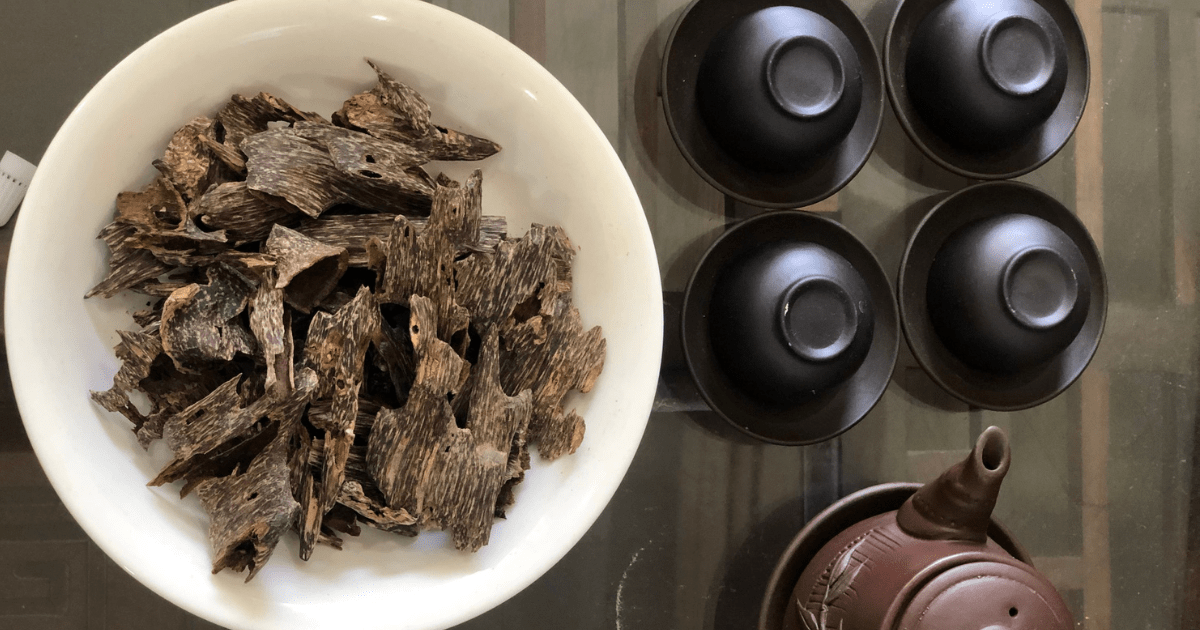
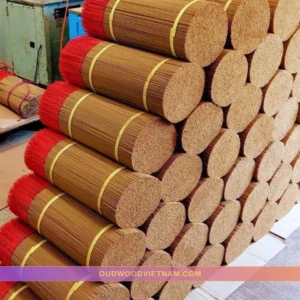
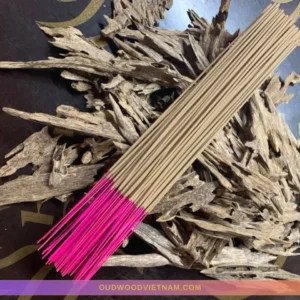
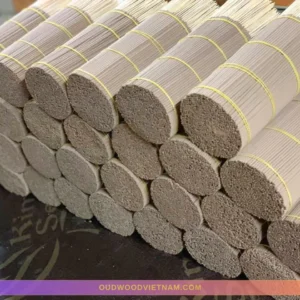
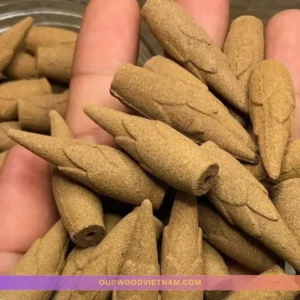
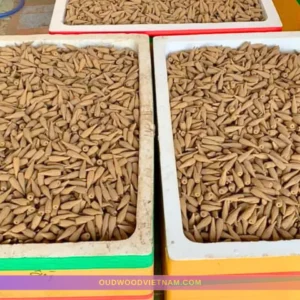


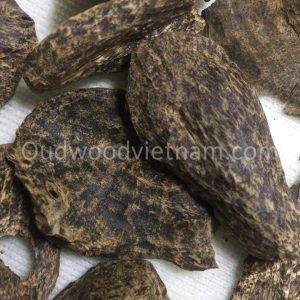
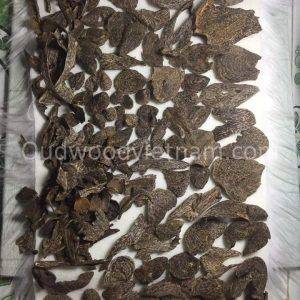
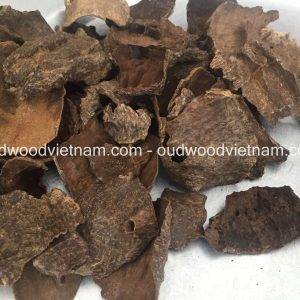

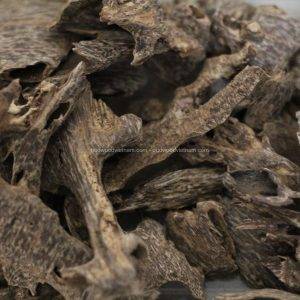
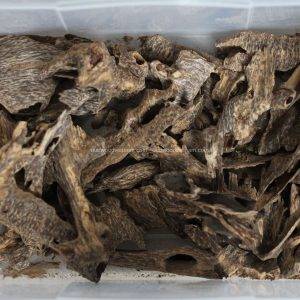
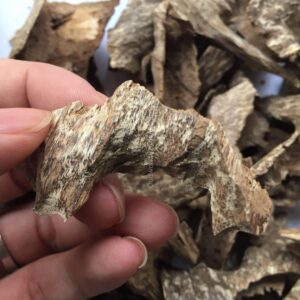
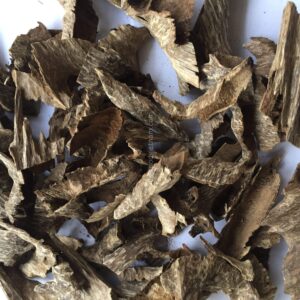
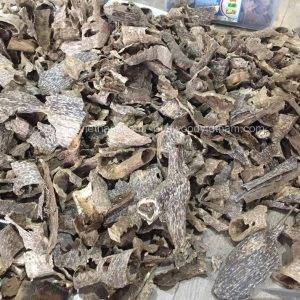
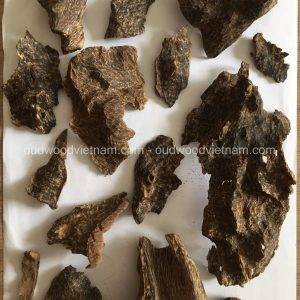
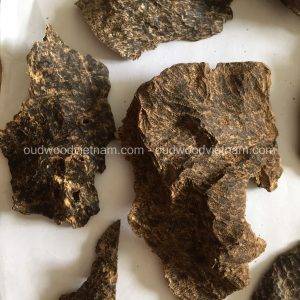
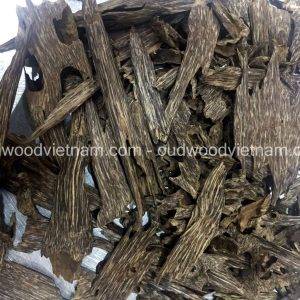
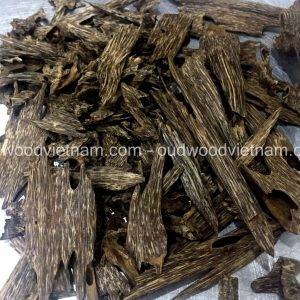
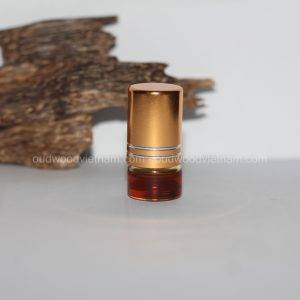
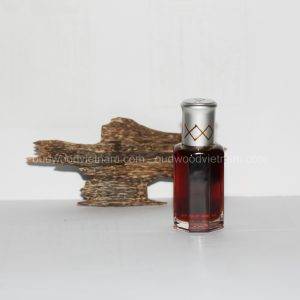

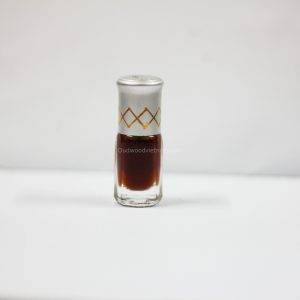
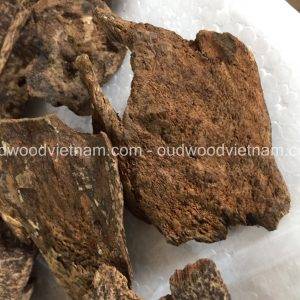
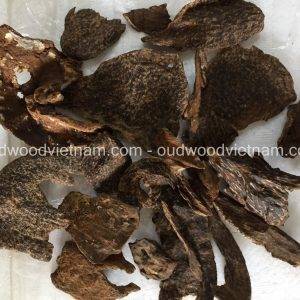
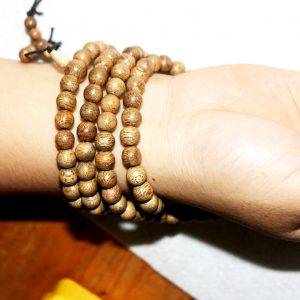
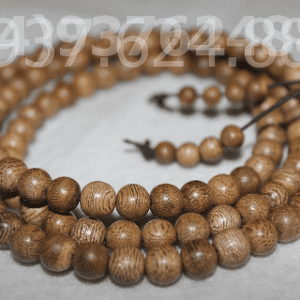
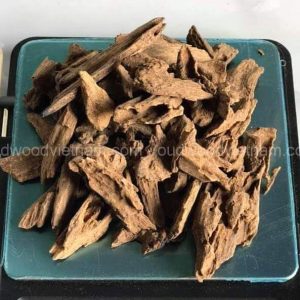
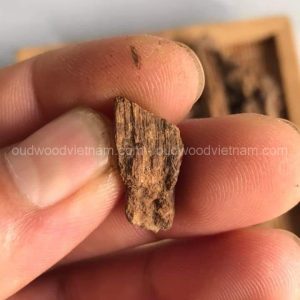
Oud Wood Agarwood Chips
Hoi An Oud Wood Agarwood Chips | Doi De A | Grade A++ | 20g
Oud Wood Agarwood Chips
Khanh Hoa Oud Wood Agarwood Chips | Chop Mu A | Grade A++ | 20g
Oud Wood Agarwood Chips
Natural Oud Wood Agarwood Chips | Mo | Grade A | 30g